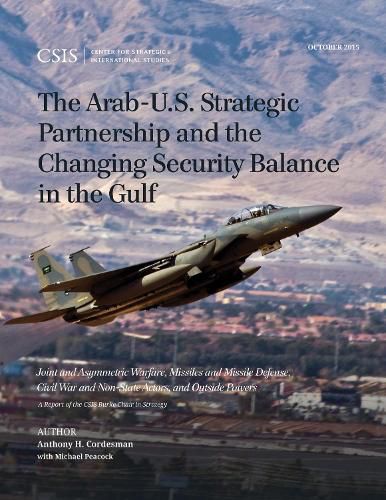Readings Newsletter
Become a Readings Member to make your shopping experience even easier.
Sign in or sign up for free!
You’re not far away from qualifying for FREE standard shipping within Australia
You’ve qualified for FREE standard shipping within Australia
The cart is loading…






The ongoing confrontation with Iran, the war against ISIL, the instability in Iraq, the Civil war in Syria, and the conflict in Yemen have all caused major changes in the security situation in the Persian Gulf and in the regional military balance. The strategic partnership between Arab Gulf states, and with the United States and other outside states, must now evolve to deal with conventional military threats and a range of new threats, including ideological extremists, non-state actors and their state sponsors, and a growing range of forces designed to fight asymmetric wars. This new report from the CSIS Burke Chair in Strategy provides a 2015 assessment of the Gulf military balance, the military capabilities of each Gulf state, the role of the United States as a security partner, and the priorities for change in the structure of both the Gulf Cooperation Council and the Arab Gulf military partnership with the United States. The assessment goes far beyond the conventional military balance and examines how force developments in the region affect joint and asymmetric warfare, missiles and missile defense, nuclear forces, as well as terrorism, the role of non-state actors, and outside powers.
$9.00 standard shipping within Australia
FREE standard shipping within Australia for orders over $100.00
Express & International shipping calculated at checkout
The ongoing confrontation with Iran, the war against ISIL, the instability in Iraq, the Civil war in Syria, and the conflict in Yemen have all caused major changes in the security situation in the Persian Gulf and in the regional military balance. The strategic partnership between Arab Gulf states, and with the United States and other outside states, must now evolve to deal with conventional military threats and a range of new threats, including ideological extremists, non-state actors and their state sponsors, and a growing range of forces designed to fight asymmetric wars. This new report from the CSIS Burke Chair in Strategy provides a 2015 assessment of the Gulf military balance, the military capabilities of each Gulf state, the role of the United States as a security partner, and the priorities for change in the structure of both the Gulf Cooperation Council and the Arab Gulf military partnership with the United States. The assessment goes far beyond the conventional military balance and examines how force developments in the region affect joint and asymmetric warfare, missiles and missile defense, nuclear forces, as well as terrorism, the role of non-state actors, and outside powers.